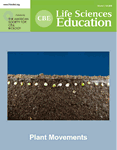Sharing in the Classroom
Effective undergraduate teaching in large courses is hard work. Even after years of teaching the same topic, committed instructors still spend hours preparing for each class, updating their material and improving their presentations. They spend additional time creating challenging homework problems and exam questions that will test student understanding, not just retention of facts.
For instructors trying to change the way they teach, the time demands are even greater. Convinced by evidence for the increased effectiveness of active-learning classroom environments (e.g., Udovic et al., 2002; Knight and Wood, 2005; Freeman et al., 2007), many instructors would like to move away from traditional lectures toward more student-centered classes that include group work, problem solving, discussion, and other activities. This transition requires creating new kinds of homework that pushes students to learn more of the material on their own outside of class, as well as new activities for meaningful work during classes. Simply introducing new techniques, such as clicker questions (Barber and Njus, 2007), for example, is not enough. To be effective, questions must be challenging, testing conceptual understanding rather than factual recall, and clearly formulated. Ideally they should also be validated by student interviews, with distractors that represent common student misconceptions. Creating such materials is not easy.
For new faculty preparing to teach a course for the first time, the combined burden of design, development, and preparation can seem overwhelming (although developing a new student-centered course is probably no more work than composing a semester's worth of traditional lectures). But for all instructors, development of materials for effective active learning in a large course is daunting, and many instructors are discouraged from trans-forming the way they teach simply by the sheer amount of their valuable time and effort that would be required to do so.
We could make our teaching in general, and the transition to student-centered teaching in particular, much less burdensome by sharing more instructional resources. Most faculty I know have developed their courses essentially single-handedly, with the help of only a textbook to supplement their own knowledge and creativity. Although textbook publishers are increasingly providing additional resources, including web-based videos and animations, the end-of-chapter questions they offer test mostly factual recall, and are generally neither challenging nor engaging enough to provide effective materials for classroom activities or formative assessments of conceptual understanding.
We should be able to do better for ourselves. Within the national community of life sciences instructors, there is an extensive and largely untapped reservoir of tested instructional resources. Challenging clicker questions that assess higher Bloom's levels of conceptual understanding (Allen and Tanner, 2002; Zheng et al., 2008) have been developed for courses throughout the typical biology curriculum. The content of some courses has been redefined by replacing simple syllabi with specific learning goals aimed at higher Bloom's levels. Assessments of conceptual understanding that can be used as pre- and posttests for measuring student learning gains in specific subject areas are being developed, allowing a more scientific approach to our teaching (Handelsman et al., 2007). Wouldn't it help all instructors if there were mechanisms for the easy sharing of such resources in the public domain?
This journal and others like it provide one means of disseminating knowledge about educational materials, but we reach only a fraction of practicing biology instructors, and our focus is on evidence for the effectiveness of new teaching resources rather than providing the resources themselves. Professional societies in the life sciences, with their extensive memberships and widely used Web portals, are in a better position to host open-access repositories of instructional materials. Several years ago the American Society for Cell Biology (ASCB) established its Image & Video Library to disseminate visual images for educational and other purposes. The society is currently in the process of expanding this repository to other kinds of educational resources, which could eventually include all the kinds of materials mentioned above. Specifically, the ASCB is beginning to build a collection of “concept questions,” multiple-choice questions that test conceptual understanding and can be used with clickers in the classroom or in other ways. Submitted questions will be reviewed by a group of ASCB Education Committee members for clarity and utility before being accepted for inclusion in the collection. Questions will be grouped into broad subject categories, and the collection will be searchable. Questions can include images, and will be provided as either PowerPoint slides or text, with an accompanying description to indicate the author(s), a title and other key words, the correct answer, the level and subject of the course for which the question was developed, the situation in which it was used, the percentage of correct answers obtained in the author's classes, the approximate Bloom's level of understanding that the question tests, and other information that may be useful to the user.
We are counting on ASCB members and others in the life sciences community to provide contributions. Please help make this collection a useful resource by submitting questions you have found effective and urging your colleagues to do likewise! For more information on the collection and how to submit questions, go to www.ascb.org/ivl and click on “Concept Questions: Information and Submission Requirements.” This is an effort that can benefit all of us who teach undergraduates in the life sciences.



